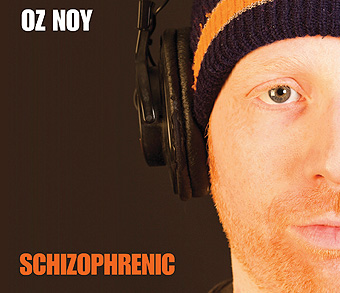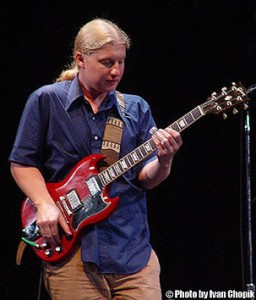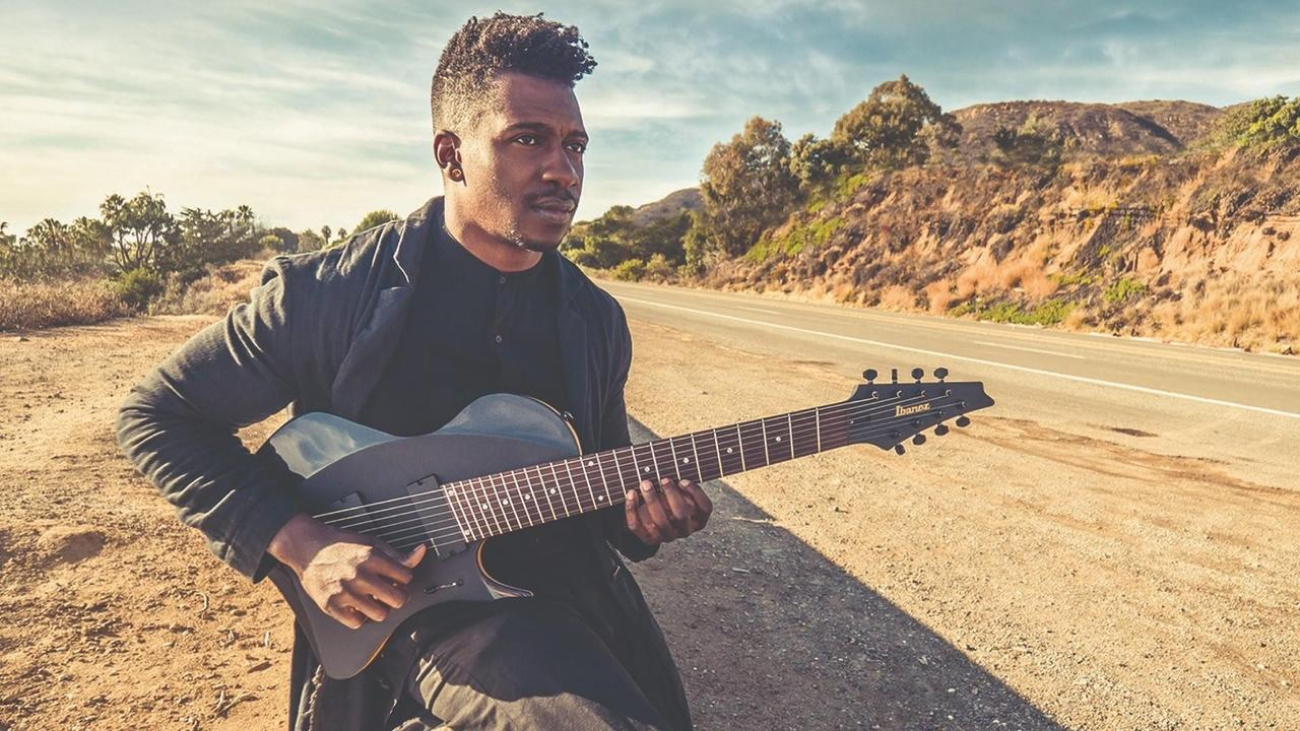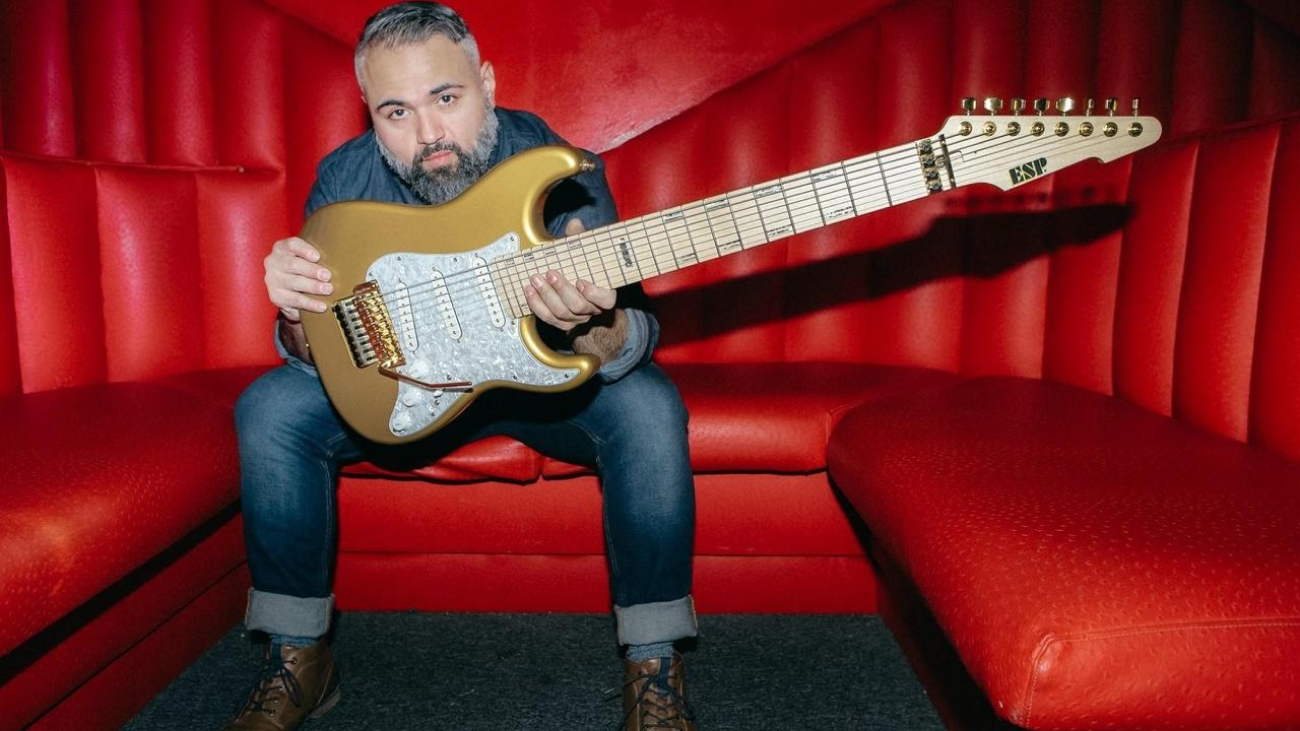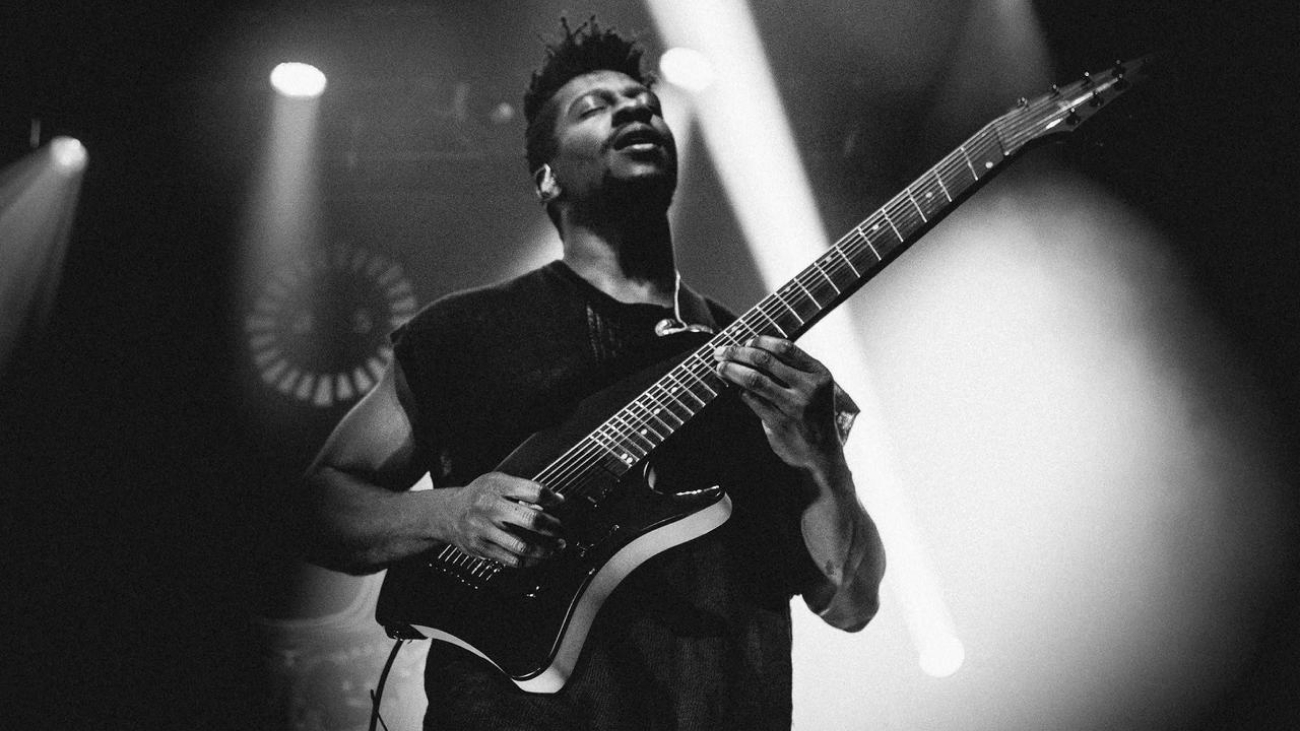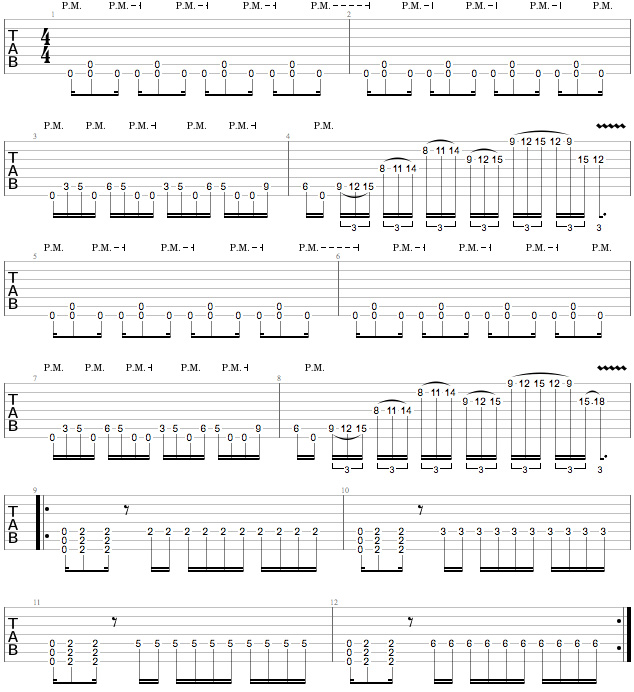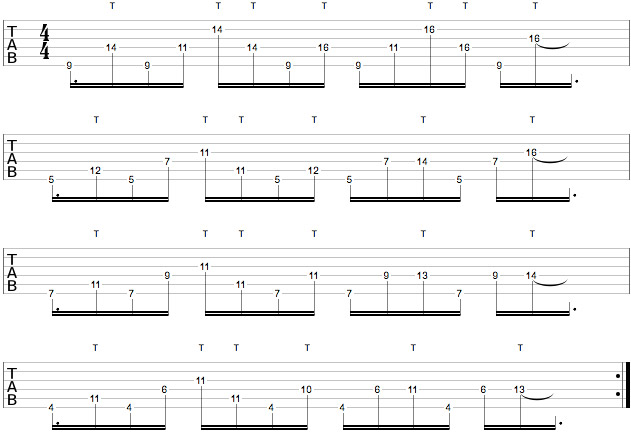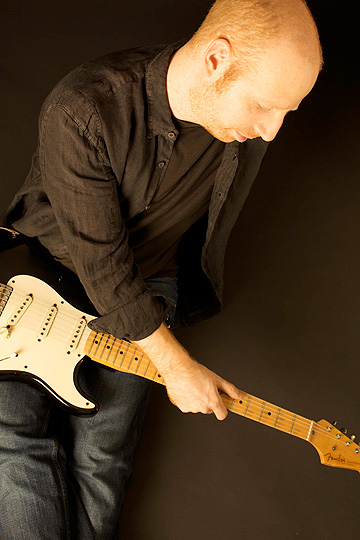 The first time I heard about Oz Noy was when I saw an advertisement for his first record in a guitar magazine. The ad had a quote in it that made me snort; or maybe it was a face palm. I don’t remember. I imagined that the quote was the work of some, oh so pleased with himself PR genius who wasn’t really into fusion. The quote was, ‘Imagine Jeff Beck meets John Scofield in James Brown’s band, and you might get the picture.’
The first time I heard about Oz Noy was when I saw an advertisement for his first record in a guitar magazine. The ad had a quote in it that made me snort; or maybe it was a face palm. I don’t remember. I imagined that the quote was the work of some, oh so pleased with himself PR genius who wasn’t really into fusion. The quote was, ‘Imagine Jeff Beck meets John Scofield in James Brown’s band, and you might get the picture.’
I later discovered that the quote wasn’t dreamed up by some hyperbolic hipster making stuff up at all. It came from a music reviewer at Guitar One Magazine. Ok, I was wrong. Anyway, I purchased the CD to find out what the deal was.
The quote didn’t exactly nail it, but I was impressed. It was a hip yet nasty mix of funk-jazz Strat extrapolations working the New York fusion thing extremely well. The rhythm section was badass and the compositions were solid and quirky in the best way.
Guitar wise, smatterings of Scott Henderson, Mike Stern and John Scofield would creep in and out, but by the second record, those party crashers had long gone. What was left was a proclivity for deconstructing Stevie Ray Vaughan in alien bop-funk environments, and a personal compositional direction.
Oz Noy’s current record is Schizophrenic. It’s his fourth release and his third studio recording. It’s his best record to date. He’s reached that venerable station in guitardom where you can pick his playing out in a crowd. While he was in Los Angeles I caught his gig at The Baked Potato. It was mesmerizing, so of course I had to meet him.
OJ: What’s going on with you?
ON: Schizophrenic came out in September. I’m about to record another one, but I don’t know exactly when yet. I have this new project called The Twisted Blues Band. It’s more of a bluesy quartet. That’s the latest. I’m pretty happy about it and I’m almost ready to record.
OJ: So the new project is going in a more blues direction.
ON: It’s kind of the same vibe but it’s more bluesy. Definitely more on the blues-ish side than the other records. I have maybe two more tunes to finish writing and then I’ll be ready.
OJ: Are you on the road a lot?
ON: I’m not one of those guys who tours a lot. Lately I’ve been traveling more. When it comes to my band, I’ll come to L.A, go to Austin or Nashville. I play New York every week. I went to Japan in November so that happens once or twice a year. Now I’m going to Europe which is my first European tour under my name. It hasn’t been like that all the time. Most of my work is basically studio work in New York.
OJ: What kind of studio work are you doing?
ON: Playing for other people. A lot of it is either jazz records or indie records. Last year I did a bunch of TV work and sometimes jingles. That stuff is so day to day. You get a call, you do a track for this, a demo here, a demo there.
OJ: Do you get enough time to compose your own music?
ON: It’s been a problem actually. In the last couple of months it’s been hectic. There’s been too much stuff that I’ve had to deal with. I have these two songs that I’m supposed to finish and I just let it go. It’s the first time that this has ever happened. When I’m in New York I play my stuff constantly. Every Monday I play at the Bitter End so I keep my thing going all the time. The fact that I play every week gives me a reason. I can write, make changes, and I keep this thing going all the time.
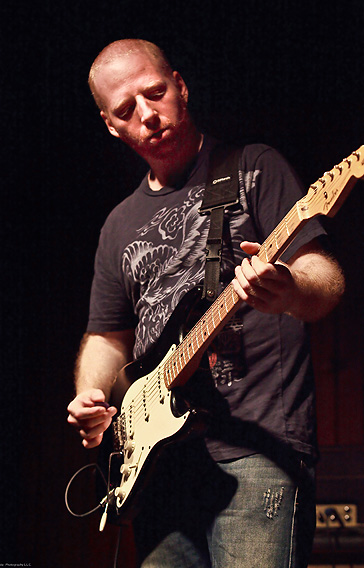
OJ: Are you playing older material?
ON: I always do new stuff. The only time I do old stuff is when I go to Europe or outside of New York, or when I have a special gig in New York. Sometimes I do this double drummer gig where it’s two drummers like the records. Other than that, when I play live it’s all new stuff.
Now with The Twisted Blues Band, I’ve been playing that for the last couple of months in New York. That’s all I’ve been doing. I haven’t played any of the old stuff. Once I’m done with the record, I’m done with it. I play it when I’m on tour or something, but when I’m in New York I’m already thinking about the next project.
OJ: Do your fans ever ask, ‘Where’s the stuff from Ha!?’
ON: They ask but it depends on where you go. I’m trying to make it interesting for myself. Sometimes I’ll do an organ trio thing. So it’s going to be me, organ, and drums. Then there are certain tunes that fit that, so I might go for some tunes from the past. Usually people who come just come to hear you play.
OJ: How do you introduce new songs to the band?
ON: Once I have a new tune I just do a simple demo on Pro Tools. If it’s Will Lee and Anton Fig from The David Letterman show, Anton has a room right by the theater. So we just go there for an hour before the show and learn a new tune or two. That’s how we’ve been doing everything. It’s really easy. We just go in at like one in the afternoon, go in for like forty-five minutes, go over the tune, then we play it live every week. It just comes together.
OJ: You had a lot of toys on the floor at your gig at The Baked Potato. What were you using?
ON: I usually use a ’73 50 watt Marshall and a ’66 or ’67 Fender Bandmaster. They’re both tweaked by Ziv Nagari. He’s like my brother. He lives in New York and he’s really good with that stuff. He works on my amps and even some of my pedals. For the gig you saw me at, I was using the Line 6 Bogner head with the tube and the 4×12 cabinet. It’s a pretty consistent amp and the thing with me is that I don’t play with a lot of distortion, so mostly I’m relying on cranking the amp.
A lot of times if you have to rent an amp, 90% of the time they’ll bring you certain amps that will just not react well. The thing with this amp is it really feels good to play on. I can get one really good tone out of it. You can’t get a bunch of tones, but there’s one tone I can get that’s good for me. There’s a thing with the gain, and the level, and all that stuff. It sounds big and makes it feel like the amp is really working hard. That’s really important to me because I don’t like to use a lot of gain out of distortion pedals, because then it loses the character of the sound that I have. I sound like any other guitar player that uses a distortion pedal. It’s tricky. That’s why I use the Line 6 Bogner when I can. It feels good to play on. A lot of times they get you a Fender amp and you want to kill yourself.
OJ: What’s on your pedal board?
ON: I use a Crybaby Wah Wah, then I have an Xotic Robotalk. I do a lot of stuff with that. The one with The Arpeggiator. Then I got a bunch of boosters. I have the EP Booster, the AC Booster, then I have this Blackstone Overdrive from this guy in New York. That’s my main booster. I usually use that, then I’ll push an RC Booster into that. They’re all different levels of boost that gets more and more distorted. Then I have an 808 Tube Screamer, and a Fulltone Octafuzz. I also have a couple of tremolos. I have the Danelectro Tremolo, a Demeter Tremolo, an MXR Phaser, and a Leslie simulator. Then I have the Line 6 M13. All my delays and the looper is there. That’s the traveling version [laughs].
OJ: I was impressed with your ability to bring effects in and out seamlessly so fast. Sometimes they would come and go very quickly.
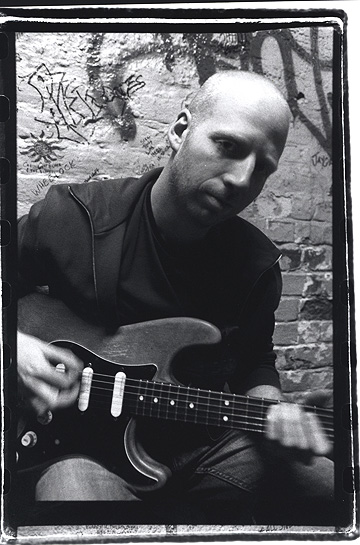
ON: I developed it from writing my tunes and playing with my band. It’s developed over the years through the records. Any pedal I have on my board has a reason to be there. I do a lot of stuff with the Leslie when I turn it on and off really fast. The reason is that in some of the compositions there will be a melody line and then a couple of chords. I put it in for those chords just to make a difference between the melody and the chords.
Same thing with the tremolo. It’s more like a rhythmical idea than an effect sometimes. Same thing with some of the delays. It’s important for me that the sound will be comfortable. A lot of those effects are worked within the music to help certain sections come out.
OJ: When you’re composing are you thinking about what effects you’re going to use?
ON: Maybe not in the beginning but eventually I do. Some songs were created just by having those effects. I usually don’t play too much with effects in the house unless I have to check something out. I was playing with this tremolo along with a nice long delay and this melody came out just because of the sound. Sometimes these things lead you to write. On the first record, the track ‘Ha!’ lead me to a lot of effects just from writing and playing out. I remember the first time I heard an Octafuzz. I went to a rehearsal and a friend of mine had it. I played one chord and I was like, ‘Oh god!’ I immediately went out and bought it. Then I came up with that riff [Sings main riff to ‘Ha!’]. That’s the sound that made it work.
After that, all the reverse delay stuff I started to use was a part of it. In that solo section I was thinking more like a Hendrix psychedelic thing. I was thinking, ‘Why don’t I use the Line 6 Reverse Delay and see what happens.’ The reason I have a bunch of those delays is because I use the reverse delay first, then I put it into some other delays. That’s what really creates all those psychedelic sounds. A lot of it just came out just from playing live or thinking about writing stuff with those sounds.
OJ: What’s your main guitar right now?
ON: I have a few Strats. I have a ’56 Relic that I do most of my trio stuff with. For the blues stuff they just made me a Custom Shop of a ’68 Relic, but I asked for certain things. I have one rosewood and one maple. They’re unbelievable.
OJ: What certain things did you ask for?
ON: They had a ’68 model that felt and sounded amazingly good but it was an ash body. I was like, ‘Oh, I don’t know about that.’ When I talked to them they said I could order anything I wanted. I told them I wanted to order the ’68, and they told me they don’t make them anymore.
They said that if I change anything in the model they’ll make one for me, which was perfect. So I told them to make me the exact same guitar, just put in an alder body instead of an ash body, and put in the regular vintage tuning pegs instead of the 70’s ones. They made it, and it sounds unbelievable. It looks and sounds like a ’68, exactly like the Hendrix thing.
OJ: Maple fretboard?
ON: I have one maple and one rosewood. The first one I ordered was a rosewood and I freaked out over it and immediately ordered a maple. I got it, two days later I called them and said, ‘Can you make me a maple?’ [laughs] That maple one is even better.
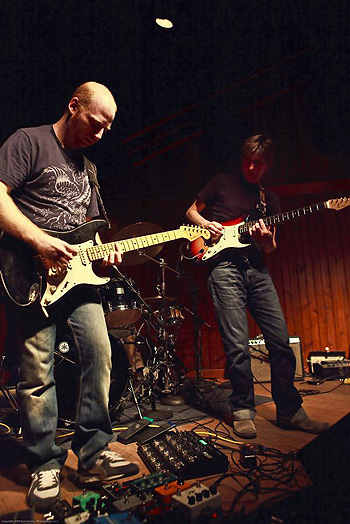
Oz Noy jamming with Eric Johnson
OJ: Those are the ones that look beat up right?
ON: Yeah. I also have a ’58 Relic Tele that I use for the blues stuff.
OJ: Did you swap out the pickups?
ON: No. I use the originals. They come with the ’69 Customs. They’re really, really good.
OJ: What’s the first thing you play the second you pick up a guitar?
ON: I’m basically a jazz musician. That’s the thing I’m trying to go for but then I like blues, rock, and funk.
OJ: What I like about your playing is that you have a jazz sensibility, yet you add blues and play outside. Was this something you consciously wanted to bring to your soloing, or is it natural to your playing style?
ON: It’s kind of both. When I grew up playing I started to learn jazz at a really young age. I started playing jazz, rock, and blues, and all that stuff at the same time. I was educated that it was important to learn jazz. I remember the first time I heard Holdsworth, Scott Henderson, and Pat Metheny and those guys. I was shocked. ‘I want to play like that!’
I went to some teachers and they said, ‘If you want to play more modern jazz or fusion, you have to learn the basics of jazz.’ So I got really deep into bebop. So I played a lot of Charlie Parker, Bud Powell, Monk, and Wes Montgomery. There were a couple of years where I played with my thumb like Wes with a jazz guitar.
At the same time I grew up in the 80’s so I liked all the shredder stuff. Then I got into Hendrix and Stevie Ray Vaughan, so I started to get into that at the same time. I always liked the sound of a Strat more than the sound of a hollow body. I never got connected to that even when I had a hollow body and I played bebop. I still didn’t like it really. Once I started to get into Stevie Ray Vaughan, I played all the records and transcribed stuff. I realized that in order to sound like him, you have to go backwards to the roots. He was already developing from Hendrix, Albert King, and B.B. King. So I started to go back and check out those guys.
My background had the basic roots of the musicians that can help you get to your own thing. When I moved to New York, for the first year or two, I used to still play my jazz guitar and I used to sound like any other guy. Then I sold it and I was left with my Strat. That was the best thing that ever happened to me.
I always liked the sound of a Strat better anyhow. Anything I needed to play was on that guitar. I can use the same sounds that I use on rock or pop gigs. There’s no difference. So I wasn’t thinking, ‘Let me do jazz and mix Hendrix, and B.B. King.’ I was thinking, ‘What do I like?’ I don’t really care if it’s not in the style. I’m just going to do it because it’s how I feel.
I think of my records as jazz music. We’re just not swinging all the time. That’s the only difference. The rest is improvisation like I’m playing a standard. When I write tunes I think about it like I’m writing a standard.
OJ: Are you modeling your originals off standards?

ON: Yeah. On the last record, ‘Jelly Blue.’ There’s a tune off Fuzzy called ‘EpistroFunk’ that’s based on ‘Epistrophy’ by Thelonious Monk. Also ‘Evidence’ by Thelonious Monk that I did in three. On the Ha! record there’s a tune called ‘Down Side Up’ which is based on ‘Rhythm Changes.’ I always write stuff modeling structure.
OJ: Then it evolves away from the original idea.
ON: Yeah. There’s a Wes Montgomery song called ‘Twisted Blues.’ I’ve been playing and loving that tune for years. I’ve been trying to write something over that and I’m kind of succeeding. On the next record is going to be my version of that. It’s not going to sound like ‘Twisted Blues’ but it’s going to be modeled on that.
OJ: What do you listen to for your own pleasure?
ON: I like songs. Even stupid songs. Good songwriting I really like.
OJ: Do you listen to Bon Jovi?
ON: [laughs] I love Bon Jovi! I can listen to Bon Jovi. I like the hits. In terms of songwriting, I love Rickie Lee Jones. John Mayer is good and of course Joni Mitchell. In terms of jazz, I’ll listen to some good Keith Jarrett or some Herbie or Chick or something like that. I listen to records that are coming out now just to see what’s out. Chris Potter came out with a new record. There’s a bunch of different guitar players that are coming out with stuff; Kurt Rosenwinkel, Adam Rogers, and people like that.
There’s a bunch of new guys that are killer. This guy Mike Moreno is fantastic. Nir Felder is another guy who’s really excellent. Pete Bernstein, Jonathan Kreisberg; there’s a bunch of really good guys. They have more of a jazz sound but they’re amazing. And you know Wayne Krantz of course. He’s a really important guy.
OJ: Where do you see yourself in ten years?
ON: Hopefully playing better and making records.
OJ: You want to compose for the orchestra at The Hollywood Bowl, don’t you?
ON: [laughs] If the money is right I’ll do it. I have kind of a weird plan. I want to keep making records. My next project is I want to do those two blues records because I know I have a lot to say with that. I kind of feel that the whole funk thing that I’ve done over the last couple of years… I’m not over, but I kind of said enough in that way. I want to do some of the Twisted Blues stuff because I got a bunch of stuff that I can explore. Eventually I’m going to start doing some jazz records where I play standards, or my way of playing standards. That’s what I want to do to begin with, but it may turn into a whole other thing.



